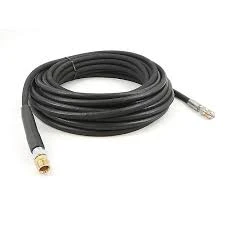repairing high pressure power steering hose
Repairing High Pressure Power Steering Hose
Power steering is an essential component of modern vehicles, allowing drivers to turn the steering wheel with ease. The high-pressure power steering hose plays a crucial role in this hydraulic system, carrying fluid from the pump to the steering gear. Over time, these hoses can become worn or damaged, leading to leaks and compromised steering performance. In this article, we will discuss how to repair a high-pressure power steering hose and ensure the efficient operation of your vehicle.
Understanding the High-Pressure Power Steering Hose
The high-pressure power steering hose is designed to withstand extreme pressures generated by the power steering pump. Typically made from durable rubber reinforced with metal, these hoses can withstand high temperatures and pressures. However, exposure to heat, oil, and road debris can eventually lead to a decline in the hose's integrity, resulting in cracks, bulges, or leaks.
Signs of a Failing Hose
Before tackling a repair, it's vital to recognize the signs of a failing power steering hose. Common indicators include
1. Fluid Leaks Puddles of reddish or pale brown fluid under your vehicle signal a leak. Check the high-pressure hose for signs of damage. 2. Steering Difficulties If the steering feels stiff or unresponsive, it may be due to insufficient fluid pressure caused by a damaged hose.
Repairing the Hose
repairing high pressure power steering hose

1. Safety First Begin by ensuring that the vehicle is parked on a flat surface with the engine off. Allow the engine to cool before starting any repair work. Wear gloves and safety goggles to protect against hydraulic fluid exposure.
2. Locate the Hose Identify the high-pressure power steering hose, usually found between the power steering pump and the steering gear. It may be necessary to remove other components for easier access.
3. Inspect the Hose Check for visible signs of wear, such as cracks or leaks. If the damage is minor, a simple repair may be possible; however, if the hose is badly damaged, replacement is recommended.
4. Repairing with Hose Clamp and Tape For small leaks, a temporary fix can be achieved by wrapping the damaged area with a good quality duct tape and securing it with a hose clamp. However, this is not a permanent solution and should only be used to get you to a shop or until you can replace the hose.
5. Replacing the Hose If the hose is beyond simple repair, you will need to replace it. Begin by loosening the clamps that hold the hose in place. Carefully remove the old hose, ensuring you have a container ready to catch any leaking fluid. Clean the connections on both ends before installing the new hose.
6. Reassemble and Refill Attach the new hose securely with clamps. Refill the power steering fluid reservoir, ensuring the correct type of fluid is used based on the manufacturer’s recommendations. Start the engine and turn the steering wheel from lock to lock to bleed any air from the system.
7. Check for Leaks After the repair, inspect the hose and surrounding areas for leaks while the engine is running. Ensure that everything is functioning correctly before driving the vehicle.
Conclusion
Repairing a high-pressure power steering hose is a manageable task for those comfortable with basic automotive maintenance. Regular inspection and timely repairs can ensure the longevity and proper functioning of your vehicle’s power steering system. If in doubt, always consult a professional mechanic to guarantee safety and optimal performance.
-
Ultimate Spiral Protection for Hoses & CablesNewsJun.26,2025
-
The Ultimate Quick-Connect Solutions for Every NeedNewsJun.26,2025
-
SAE J1401 Brake Hose: Reliable Choice for Safe BrakingNewsJun.26,2025
-
Reliable J2064 A/C Hoses for Real-World Cooling NeedsNewsJun.26,2025
-
Heavy-Duty Sewer Jetting Hoses Built to LastNewsJun.26,2025
-
Fix Power Steering Tube Leaks Fast – Durable & Affordable SolutionNewsJun.26,2025

